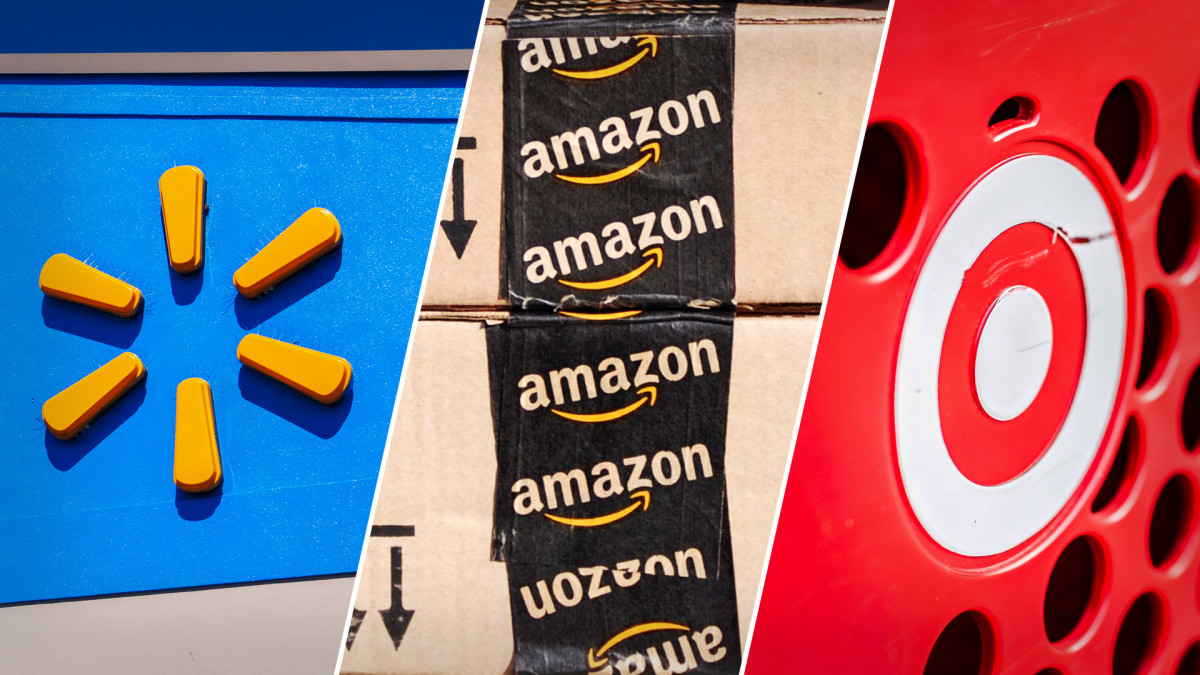Analysis: Get ready for a shakeup in the Dow Jones industrials
Walmart is splitting its stock at the end of February. That may lead to more changes in the 128-year-old index. Here's how it might happen.

The conventional wisdom on the Dow Jones Industrial Average is that it stands as an all-powerful collection of stocks that never change.
Not true.
Related: Analysts revamp Amazon stock-price targets after earnings
The Dow has been around since 1896 and not a single of the original 12 stocks is in the average. The last to leave was General Electric (GE) - Get Free Report in 2018 as the industrial conglomerate struggled with too many weak businesses and was forced to spin off or sell many of its assets.
More on Walmart
- Walmart makes a surprise move that investors will love
- Forget new stores, Walmart quietly makes an even bigger move
- Forget Walmart, Amazon may finally have a true retail rival
The last three to join the average, in 2020, were biotech giant Amgen (AMGN) - Get Free Report, Honeywell International (HON) - Get Free Report, and Salesforce Inc. (CRM) - Get Free Report.
The trio replaced, almost shockingly, Exxon Mobil (XOM) - Get Free Report, pharmaceutical giant Pfizer (PFE) - Get Free Report and Raytheon Technologies (RTX) - Get Free Report.
The word shockingly is used because Exxon Mobil had been a Dow member since 1928, when the index was expanded to 30 components.
Pfizer joined in 2004. Raytheon became a member after United Technologies merged with Raytheon.
Walmart's split may mean changes ahead
Now it looks like the people who manage the Dow and the Standard & Poor's 500 Index, S&P Dow Jones Indices, part of S&P Global, may be getting ready to change the index again.
The reason is Walmart (WMT) - Get Free Report, which announced a 3-for-1 stock split last week that takes effect on Feb. 26.
If you own 100 Walmart shares now, you will own 300 shares after the split. The stock finished Friday at $165.57. With the split, the price should drop to around $56.00. Walmart has split 11 times since going public in 1974, always 2-for-1 splits.
Walmart's reason for splitting is to make the shares cheaper and more affordable to more of its workforce. Already, some 400,000 Walmart workers (out of a worldwide workforce of 2.1 million) buy company shares regularly through a company-run stock purchase plan. Image source: Shutterstock/TheStreet
For employees of most big companies, stock splits are like manna from heaven.
If you work long enough and don't sell, the shares and their value build up. One share of Walmart bought in 1975 and held through all the splits would be worth nearly $87,000 today.
The employee stock purchase plan at rival Costco Wholesale (COST) - Get Free Report is quite popular, in part because Costco employees stay a long time: an average nine years.
The Dow itself is affected
Walmart's stock-split will have an effect on the Dow itself. Which requires two points:
The Dow is a snapshot of U.S. business and the economy. That's goal, both in terms of what drives them and their health, says S&P analyst Howard Silverblatt.
So, its members should be in the S&P 500, which only admits U.S. domiciled companies. They should be profitable. They should look like the economy.
Increasingly, it brought in tech companies: IBM in 1979; Hewlett-Packard in 1997, Microsoft and Intel (INTC) - Get Free Report in 1999, Apple in 2015, and Salesforce (CRM) - Get Free Report in 2020. It has changed mightily over the years as the economy has evolved. One original member, U.S Leather was liquidated in 1952.
The index is price-weighted. That is, the higher the per-share of the stock, the more impact is has on the value of index. If the stock drops or split, the lower value reduces its impact.
In Walmart's case, the split will drop the company's ranking among Dow stocks from 17th to 25th.
And that will require a change in the Dow's divisor, which determines the index level. You add up the prices of each stock, divide the sum by the divisor, and the result is the index level.
For the record, the current divisor is 0.15172752595384.
If a stock's price is cut, the divisor has to be adjusted so that the index itself stays the same.
Walmart's split may lead to other changes
The likely immediate change in Walmart's case is that all the other Dow stocks will have a little more influence on the index.
But the speculation is Walmart's move is just the start of other moves to deal with economic change. Some stocks, especially pharmacy giant Walgreens Boots Alliance (WBA) - Get Free Report, are weak performers. Walgreens fell 30% in 2023 and is off 13.3% this year.
Shares of UnitedHealth Group (UNH) - Get Free Report finished Friday at $510.23, 22 times greater than Walgreen's $22.64. Typically, S&P Dow Jones likes the ratio to be closer to 10.
But if Walgreen's is removed, what goes in?
Potential choices might be
- Costco (Feb. 2 price: $709.48)
- Meta Platforms (META) - Get Free Report (Feb. 2 price: $477.49)
- Google-parent Alphabet (GOOGL) - Get Free Report (Feb. 2 price $142.38)
- Amazon.com (AMZN) - Get Free Report (Feb. 2 price: $171.81)
- Target (TGT) - Get Free Report (Feb. 2 price: $145.49.)
The first three have downsides.
Costco and Meta shares are so pricey that they could swamp the other Dow components.
Meta and Alphabet also have two classes of shares that would have to be organized somehow.
Amazon doesn't pay a dividend, but that wouldn't be a dealbreaker. Target is still working through the effects of the Covid-19 Pandemic.
Let's assume S&P Dow puts in two stocks. Costco is a good possibility and one of Meta, Alphabet or Amazon.
Costco and Meta would want to split their shares. Other than Walmart, S&P's Silverblatt says he hasn't heard of any splits in process.
Amazon is an outlier, but the stock price isn't too high. Adding Costco would kick out Target.
What components might go? Walgreen looks likely and maybe 3M (MMM) - Get Free Report, struggling with litigation problems.
To make it work would require at least one stock split. That's doable, and, certainly, for a chance to be in the Dow, why not?
Apple split its stock 7-for-1 in 2020. But Visa's (V) - Get Free Report 4-for-1 split made bringing Apple in possible.
Related: Veteran fund manager picks favorite stocks for 2024
What's Your Reaction?



























































